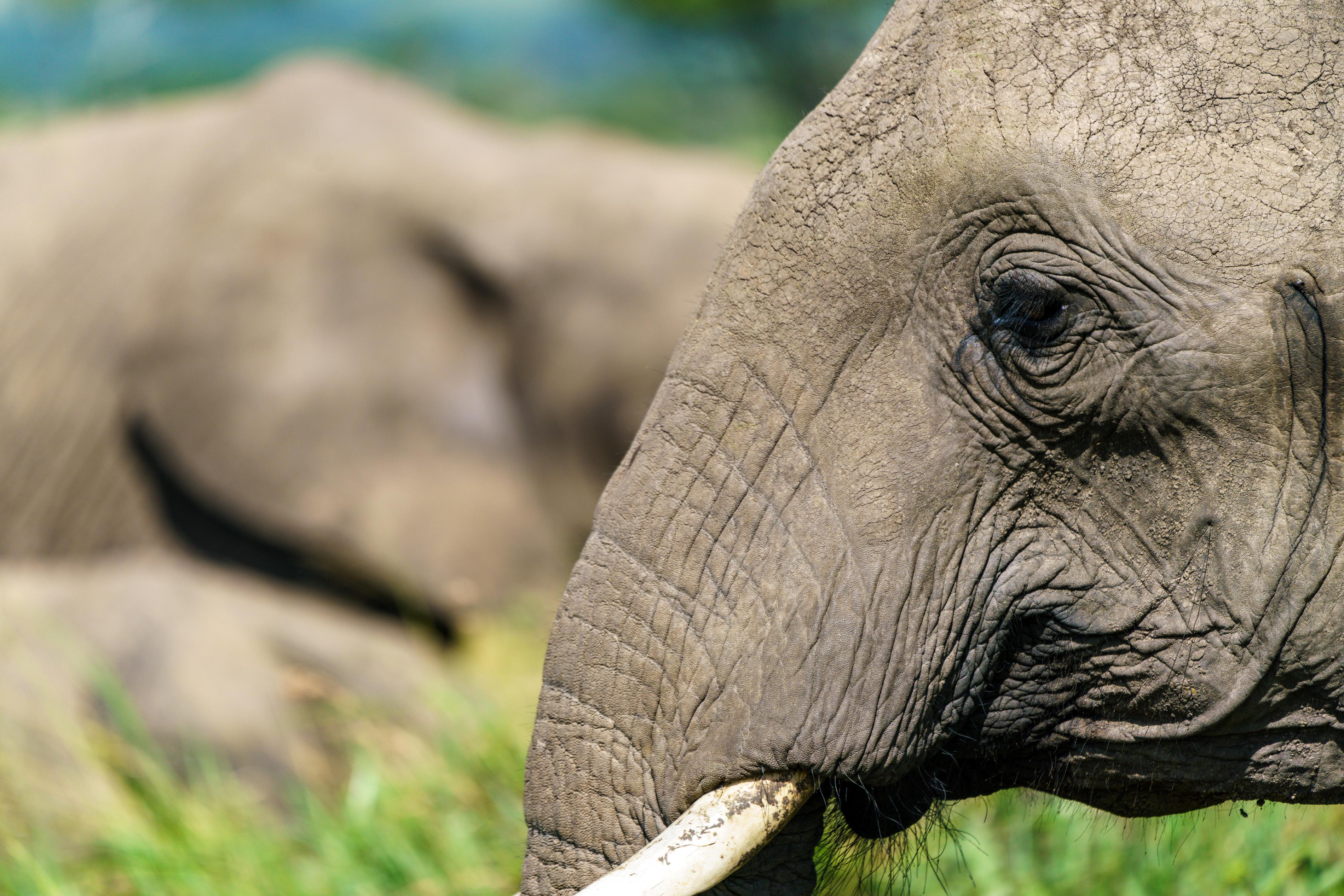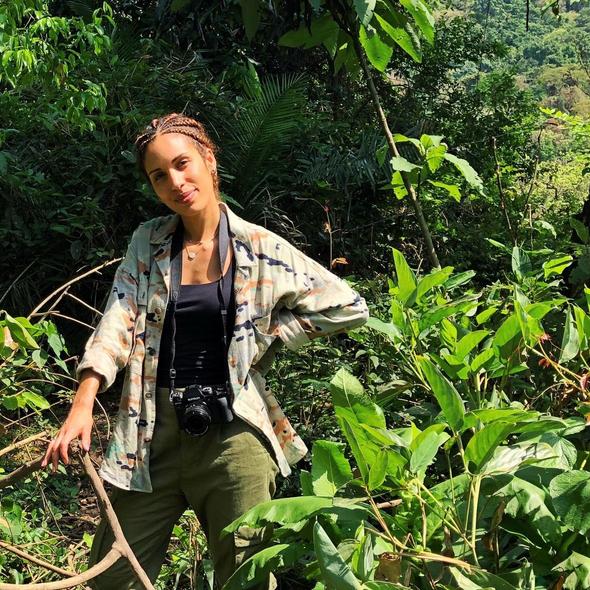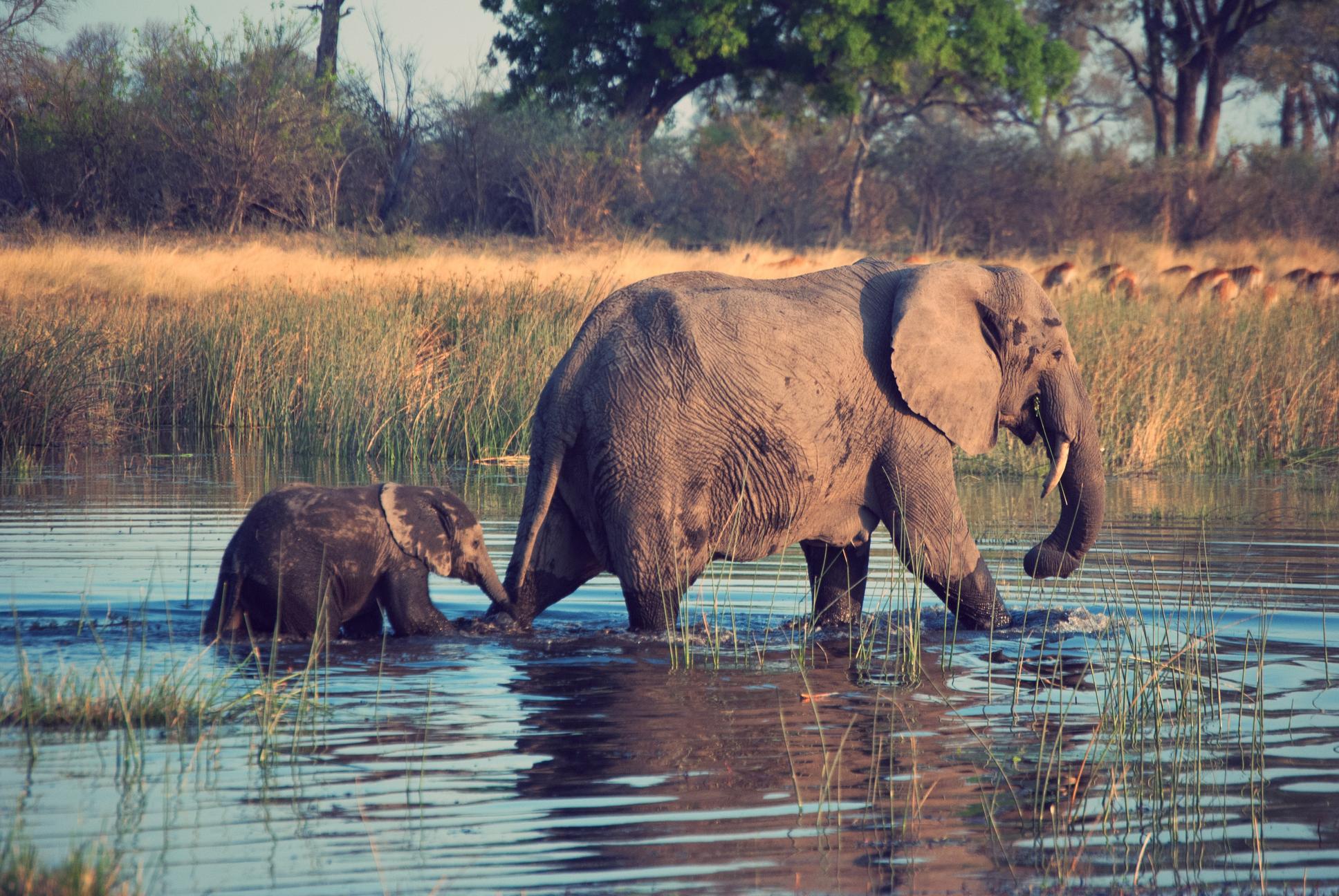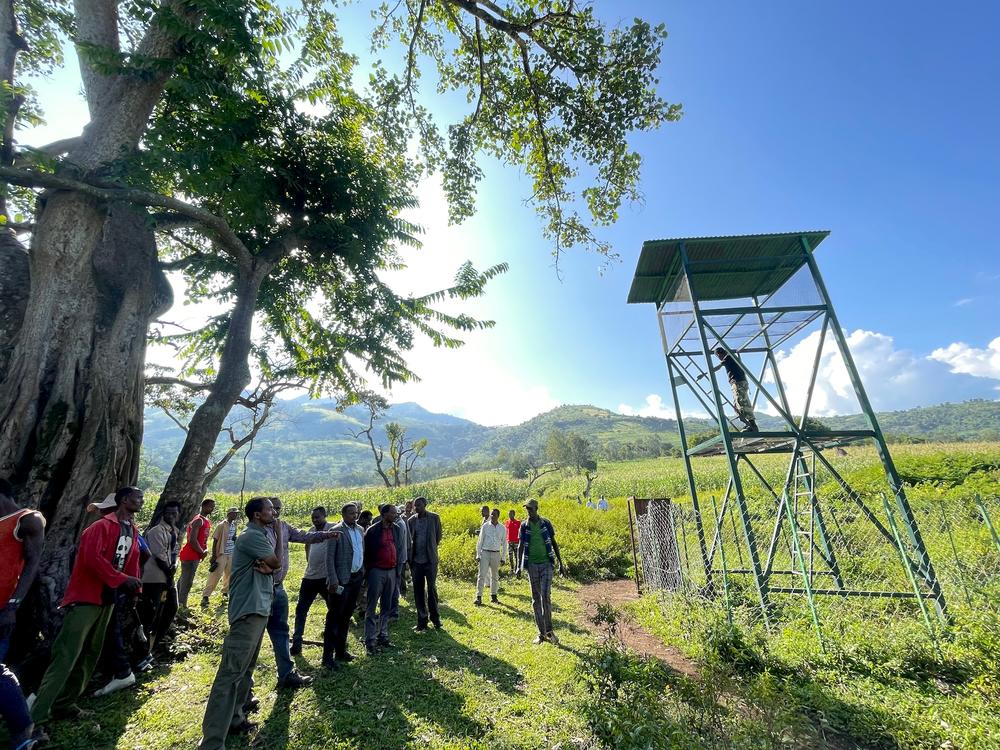By Vanessa Bauza
June 27, 2024
To coexist with giants, meet people's needs first: expert
12 min

By Vanessa Bauza
June 27, 2024
12 min
Greta Francesca Iori heard the elephant’s sharp trumpet blare and knew she was in trouble.
While mapping elephant habitats in a new national park in western Ethiopia, she and a team of researchers and scouts had unwittingly wandered into a herd — nearly 60 strong, with their young. Suddenly, they were surrounded on all sides.
“We were in very thick jungle. It was hard to see, we must have startled them,” Iori recalled of the encounter from several years ago. “We realized they were very close because the sound almost felt like it came from within us, like a screeching. All of a sudden, your life flashes before your eyes; they can charge at any moment.”
She and the others leapt into the trees and didn’t come down until dusk, when they were reasonably assured that the herd had moved on. “I think that was the first time that I really understood what it meant to coexist with elephants,” she said.
A Conservation International fellow, Iori spent a decade working with the Elephant Protection Initiative to prevent human-elephant conflict. Her guiding philosophy is that saving Africa’s elephants requires understanding and supporting rural communities that share spaces with them. In short, that people and wildlife can only prosper together.
“I love elephants; my work is all about protecting them,” she said. “And that means seeing the conflict from both sides — starting with meeting people’s basic human needs and addressing issues of inequality. Then the pressure on wildlife is reduced.”
Conservation News spoke with Iori about the realities of living alongside elephants, misconceptions about poachers, and the relationship between poverty and conservation.

© Greta Iori
Greta Francesca Iori conducting research in Chebera-Churchura National Park, Ethiopia
How did you get your start in elephant protection?
Greta Francesca Iori: I saw my first elephant when I was 25 years old. Before then, I would never have imagined they would be at the center of my career.
I was born and raised in Addis Ababa, Ethiopia — the daughter of an Ethiopian mother and an Italian-Eritrean father. We travelled often, spending time river rafting or pitching tents in Ethiopia’s national parks. I saw the natural beauty of my country and the relationship people had to it.
My love for the outdoors led me to study tourism development, sustainability and natural resource management in the Netherlands. When I returned to Ethiopia, I began working at the Simien Mountains National Park — our most famous protected area and home to iconic species like the Ethiopian wolf, Gelada baboon and the Walia ibex.
I spent many years there and really began to understand the conflicting objectives between tourism developers, government and local Indigenous communities. I saw how local people were often overlooked and displaced, both by private investors and local government. Neither wildlife nor local people’s needs were considered in plans for tourism facilities or roads — though the park is a fragile ecosystem.
From there, I began working on my master’s degree at King’s College London, where I specialized in environmental conflicts. It was 2014, the height of the resurgence in the ivory poaching crisis, when roughly 96 elephants were being killed every day for their tusks. My work turned to the world of the illegal wildlife trade.

© Tobias Adam/ Elephant Protection Initiative Foundation
A mother elephant and her baby.
What drew you to that work?
GI: It was incredible to me that the largest land animal in the world was being massacred at that scale. And it was happening under the watch of powerful governments, which claimed they were against ivory poaching.
At the same time, there were a lot of stereotypes about poachers. The rhetoric was that if you're a poor African, you’re at risk of being a poacher. Communities that had never participated in poaching an elephant were being labeled and treated as if they'd already done it. And anti-poaching units in national parks and reserves across Africa were increasingly becoming privatized and highly militarized.
The missing question was, ‘who’s driving demand?’ The illegal wildlife trade is a massive global crime sector estimated to be worth US $20 billion a year. Though wildlife trade is driven by organized crime, the rhetoric often focuses on the little guys rather than the buyers and facilitators at the top of the supply chain.
What did your work with the Elephant Protection Initiative consist of?
GI: I worked with the Elephant Protection Initiative (EPI) for nearly a decade. I helped close down domestic ivory markets, and managed and mitigated the incredibly complex realities of human-elephant conflict and coexistence.
The initiative is unique in that it’s an African-led response to the challenges of elephant conservation. It includes 24 African member states and aims to foster an understanding of what’s at the root of conflicts between humans and elephants. They meet with government wildlife departments, ministers and heads of state to discuss things like land-use planning, ivory stockpile management, unsustainable development and the social drivers of conflict — such as the displacement of people. They explain how histories of dispossession or exploitation have led to conflict in some areas and why we're seeing a spike in wildlife conflict in certain places.
The work I did with the EPI enabled local solutions to human-elephant conflict, based on communities’ knowledge and traditions. And we amplified African voices by working with local media to ensure the stories of people are heard. By helping decision-makers in Africa, and further afield, understand different points of view, we stand a better chance of achieving solutions.
Conflicts with elephants have a huge impact on local people, and we won’t solve them unless we understand what they are dealing with day to day.
Paint a picture of what it’s like for people who live near elephant habitats.
GI: I always say that anyone who uses the term ‘gentle giants’ about elephants hasn’t spent much time among them. There's such awe and wonder about this animal — few species evoke the majesty that they do — but living with them is completely different from visiting them. When we talk about elephant protection, it’s important to remember that elephants pose a real threat in many rural communities.
Imagine this: You’re sleeping in your bed and suddenly an entire herd of elephants has wandered into your village and is wreaking havoc on your crops. They’re trampling homes and destroying infrastructure. And you’re risking your life to protect your family and farm — the only asset you have. That’s the scenario unfolding night after night in many rural communities across Africa.
It's hard to deter an elephant that is fighting for its own agency because it’s hungry and all its food has dried up or its habitat has been fragmented. They're very territorial and they will do whatever it takes to protect their family — and that's essentially what we would do as well.
And the conflict is getting worse?
GI: Yes. Rapid development, and growing human populations have transformed land, especially in the past 20 years. New road networks, agriculture, mining and other industries have been built, often without any consideration for wildlife habitats and migratory paths. And on top of that, many African countries are facing major impacts from climate change — with water sources drying up and competition for resources fueling displacement and food insecurity.
Wildlife adapts just as we would. Elephants are moving to new areas in search of food, water and mates — that brings them into greater contact with people than ever before. And as climate change accelerates, conflicts between people and elephants are expected to increase.
What’s one approach that’s worked?
GI: There’s no one-size-fits all solution to human-elephant conflict. A lot of it is based on people's traditional knowledge of the region. For example, in Ethiopia we were seeing a lot of loss of life, particularly in children, during harvest season. The crops were high, and farmers couldn’t see elephants approaching. Together with our partner Save the Elephants, we immediately thought of having watch towers, which are essentially early warning systems. They're higher than the crops and are manned 24 hours a day. If elephants are in the area, rangers and community members notify communities to keep their children indoors or to walk with them. The people on the watch towers become the eyes and ears of the community.
Since we've inaugurated them, we’ve had no fatalities and a significant reduction in conflicts. So, this is a very noninvasive, practical way of addressing the issue in the short-term.

© Greta Iori
Inauguration of Ethiopia's first human-elephant conflict watchtower in Chebera-Churchura National Park
I’m struck by how your work emphasizes people as much as elephants.
GI: Often, when I meet with heads of state or high-level ministers, they'll say, ‘Okay, so what is the solution? What do I need to do?’
A lot of my job is conveying that the future of Africa's natural areas — of biodiversity — will never be resolved by one thing. Wildlife conflict is really conflict between people about resources — and elephants and other wildlife are caught up in it.
The greatest enemy of the environment will always be poverty. Someone who is hungry or poor will be left with no choice but to poach or to compete with wildlife for resources — often knowing that they are essentially harming themselves in the long term. For centuries local people have coexisted with nature, but the broader systems and markets we operate within today means many are simply trying to survive. Understanding the root causes of habitat degradation, wildlife and biodiversity loses will help identify scalable solutions before it’s too late.
We need to find ways where nature and people can coexist. And that means addressing the needs of Africans who live near wildlife — these are the people who are too often ignored.
Vanessa Bauza is the senior communications director at Conservation International. Want to read more stories like this? Sign up for email updates here. Donate to Conservation International here.